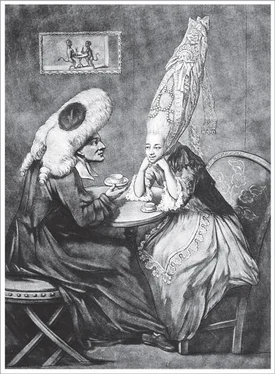Bill Bryson - At Home
Здесь есть возможность читать онлайн «Bill Bryson - At Home» весь текст электронной книги совершенно бесплатно (целиком полную версию без сокращений). В некоторых случаях можно слушать аудио, скачать через торрент в формате fb2 и присутствует краткое содержание. Жанр: Старинная литература, на английском языке. Описание произведения, (предисловие) а так же отзывы посетителей доступны на портале библиотеки ЛибКат.
- Название:At Home
- Автор:
- Жанр:
- Год:неизвестен
- ISBN:нет данных
- Рейтинг книги:4 / 5. Голосов: 1
-
Избранное:Добавить в избранное
- Отзывы:
-
Ваша оценка:
- 80
- 1
- 2
- 3
- 4
- 5
At Home: краткое содержание, описание и аннотация
Предлагаем к чтению аннотацию, описание, краткое содержание или предисловие (зависит от того, что написал сам автор книги «At Home»). Если вы не нашли необходимую информацию о книге — напишите в комментариях, мы постараемся отыскать её.
At Home — читать онлайн бесплатно полную книгу (весь текст) целиком
Ниже представлен текст книги, разбитый по страницам. Система сохранения места последней прочитанной страницы, позволяет с удобством читать онлайн бесплатно книгу «At Home», без необходимости каждый раз заново искать на чём Вы остановились. Поставьте закладку, и сможете в любой момент перейти на страницу, на которой закончили чтение.
Интервал:
Закладка:
The idea of personal space, which seems so natural to us now, was a revelation. People couldn’t get enough of it. Soon it wasn’t merely sufficient to live apart from one’s inferiors; one had to have time apart from one’s equals, too.
As houses sprouted wings and spread, and domestic arrangements grew more complex, words were created or adapted to describe all the new room types: study, bedchamber, privy chamber, closet, oratory (for a place of prayer), parlor, withdrawing chamber , and library (in a domestic as opposed to institutional sense) all date from the fourteenth century or a little earlier. Others soon followed: gallery, long gallery, presence chamber, tiring (for attiring ) chamber, salon or saloon, apartment, lodgings, suite , and estude . “How widely different is all this from the ancient custom of the whole household living by day and night in the great hall!” wrote J. Alfred Gotch in a moment of rare exuberance. One new type not mentioned by Gotch was boudoir , literally “a room to sulk in,” which from its earliest days was associated with sexual intrigue.
Even with the growth of comparative privacy, life remained much more communal and exposed than today. Toilets often had multiple seats, for ease of conversation, and paintings regularly showed couples in bed or bath in an attitude of casual friskiness while attendants waited on them and their friends sat amiably nearby, playing cards or conversing but comfortably within sight and earshot.
The uses to which all the new rooms in the house were put were not for a long time so rigorously segregated as now. All rooms were in some sense living rooms. Italian blueprints from the time of the Renaissance, and beyond, didn’t label rooms for type. People moved around the house looking for shade or sunlight and often took their furniture with them, so rooms, when they were labeled at all, were generally marked mattina (for morning use) or sera (for afternoon). Much the same sort of informality obtained in England. A bedchamber was used not just for sleeping but also for taking private meals and entertaining favored visitors. In fact, the bedroom became so much a place of general resort that it was necessary to devise more private spaces beyond. ( Bedroom was first used by Shakespeare in A Midsummer Night’s Dream in about 1590, though he meant it only in the sense of space within a bed. As a word to describe a dedicated sleeping chamber, bedroom didn’t become common until the following century.)
The small rooms off the bedchamber were used for every sort of private purpose, from defecation to assignation, so the words for these rooms have come down to us in a curiously fractured fashion. Closet , Mark Girouard tells us in Life in the English Country House , had “a long and honourable history before descending to final ignominy as a large cupboard or a room for the housemaid’s sink and mops.” Originally, a closet was more like a study than a storeroom. Cabinet , originally a diminutive form of cabin , by the mid-1500s had come to signify a case where valuables were kept. Very soon after that—in only a decade or so—it had come to mean the room itself. The French, as so often, refined the original concept into a variety of room types, so that by the eighteenth century a large French château might have a cabinet de compagnie , a cabinet d’assemblée , a cabinet de proprieté , and a cabinet de toilette in addition to a plain cabinet .
In England the cabinet became the most exclusive and private of all chambers—the innermost sanctum where the most private meetings could take place. Then it made one of those bizarre leaps that words sometimes make and came to describe (by 1605) not just where the king met with his ministers, but the collective term for the ministers themselves. This explains why this one word now describes both the most intimate and exalted group of advisers in government and the shelved recess in the bathroom where we keep Ex-Lax and the like.
Often this private room had a small cell or alcove off it, generally known as the privy but also called, among other things, jakes, latrine, draughts, place of easement, necessarium, garderobe, house of office, or gong. Whatever it was called, this room contained a bench with a hole in it, strategically positioned over a long drop into a moat or deep shaft. It is often supposed and sometimes written that, in a similar fashion to cabinet , the privy gave its name to the appurtenances of government in England, notably the Privy Seal and the Privy Council. In fact, those terms came to England with the Normans nearly two centuries before privy took on its lavatorial sense. It is true, however, that the person in charge of the royal privy was known as the groom of the stool, or stole, and over time advanced from being a cleaner of toilets to being the monarch’s trusted adviser.
The same process occurred with many other words. Wardrobe originally signified a room for storing apparel. Then it became successively a dressing room, a sleeping room, a privy, and finally a piece of furniture. Along the way it also collected the meaning of one’s full set of clothes.
To accommodate all the new room types, houses grew outward as well as upward. An entirely new type of house, known as the prodigy house, began to sprout and proliferate all over the countryside. Such houses were almost never less than three stories high and sometimes four, and they were often staggeringly immense. The most enormous of all was Knole in Kent, which grew and grew until it covered nearly four acres and incorporated 7 courtyards (one for each day of the week), 52 staircases (one for each week of the year), and 365 rooms (one for each day of the year), or so it has long been said.
Looking at these houses now you can sometimes see, in the most startling way, how the builders were learning as they went. A striking example is Hardwick Hall in Derbyshire, which was built for the Countess of Shrewsbury—Bess of Hardwick, as she is always called—in 1591. Hardwick Hall was the marvel of its age and instantly became famous for its great expanses of windows, prompting the much quoted epigram “Hardwick Hall, more glass than wall.” To modern eyes, the windows are of a size and distribution that seem pretty close to normal, but they were such a dazzling novelty in 1591 that the architect (who is thought to have been Robert Smythson) didn’t actually know how to fit them all in. Some of the windows are in fact blanks hiding chimneys. Others are shared by rooms on separate floors. Some big rooms don’t have nearly enough windows, and some tiny rooms have little else. Only intermittently do the windows and the spaces they light actually match.
Bess filled the house with the finest array of silver, tapestries, paintings, and the like of any private house in England, yet the most striking thing to modern eyes is how bare and modest is the overall effect. The floors were covered in simple rush mats. The great gallery was 166 feet long but contained only three tables, a few straight-backed chairs and benches, and two mirrors (which in Elizabethan England were exceedingly precious treasures, more valuable than any paintings).
People didn’t just build enormous houses, they built lots of enormous houses. Part of what makes Hardwick Hall so remarkable is that there was already a perfectly good existing Hardwick Hall (which became known as Hardwick Old Hall), just across the grounds. Today it is a ruin, but it remained in use in Bess’s day and for another 150 years beyond.
Traditionally, the great house builders (and house accumulators) were monarchs. At the time of his death Henry VIII had no fewer than forty-two palaces. But his daughter Elizabeth cannily saw that it was much cheaper to visit others and let them absorb the costs of her travels, so she resurrected in a big way the venerable practice of making annual royal progresses. The queen was not in truth a great traveler—she never left England or even ventured very far within it—but she was a terrific visitor. Her annual progresses lasted eight to twelve weeks and took in about two dozen houses.
Читать дальшеИнтервал:
Закладка:
Похожие книги на «At Home»
Представляем Вашему вниманию похожие книги на «At Home» списком для выбора. Мы отобрали схожую по названию и смыслу литературу в надежде предоставить читателям больше вариантов отыскать новые, интересные, ещё непрочитанные произведения.
Обсуждение, отзывы о книге «At Home» и просто собственные мнения читателей. Оставьте ваши комментарии, напишите, что Вы думаете о произведении, его смысле или главных героях. Укажите что конкретно понравилось, а что нет, и почему Вы так считаете.












